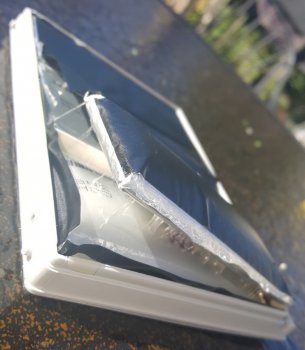Hi, Hope everybody is doing well in this hard time,
One of the (cells/parts) of my battery is swollen and right I can afford to buy a new battery and I plan to buy a new MacBook Pro by October.
I was looking on the net for fix and I saw this post from 2011. It suggests making a hole in the swollen part to let the trapped gas escape but,
I don't feel comfortable knowing that the battery might keep emitting toxic gas while I'm using it.
Before I did some research I look at the battery and saw that each (cell/part) was individually welded to the ''battery logic board" and I was wondering if removing that one cell/part (The one swollen) is safe and if my battery will keep working until I can replace it.
IT IS AN AFTER-MARKET BATTERY
Any suggestion or fix, which route I should take, and is it safe.
Note: Can afford to buy a new battery right now maybe in like three months.
One of the (cells/parts) of my battery is swollen and right I can afford to buy a new battery and I plan to buy a new MacBook Pro by October.
I was looking on the net for fix and I saw this post from 2011. It suggests making a hole in the swollen part to let the trapped gas escape but,
I don't feel comfortable knowing that the battery might keep emitting toxic gas while I'm using it.
Before I did some research I look at the battery and saw that each (cell/part) was individually welded to the ''battery logic board" and I was wondering if removing that one cell/part (The one swollen) is safe and if my battery will keep working until I can replace it.
IT IS AN AFTER-MARKET BATTERY
Any suggestion or fix, which route I should take, and is it safe.
Note: Can afford to buy a new battery right now maybe in like three months.


